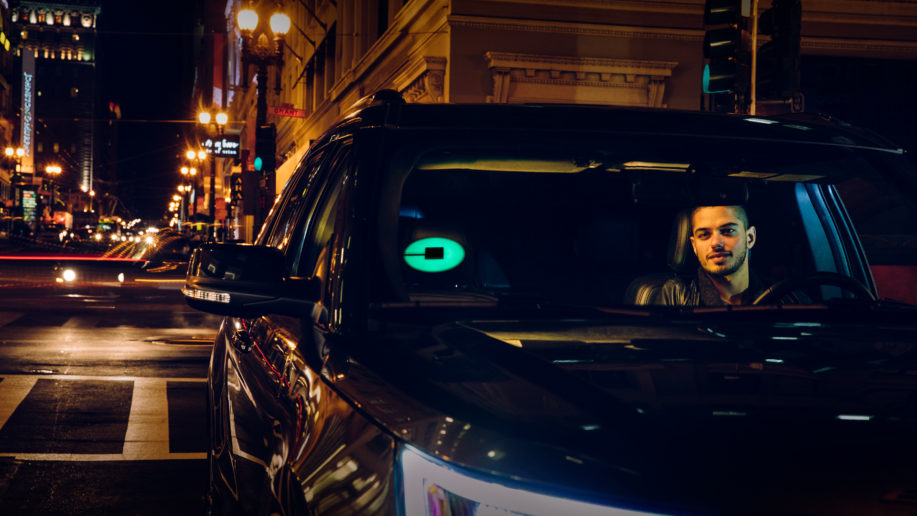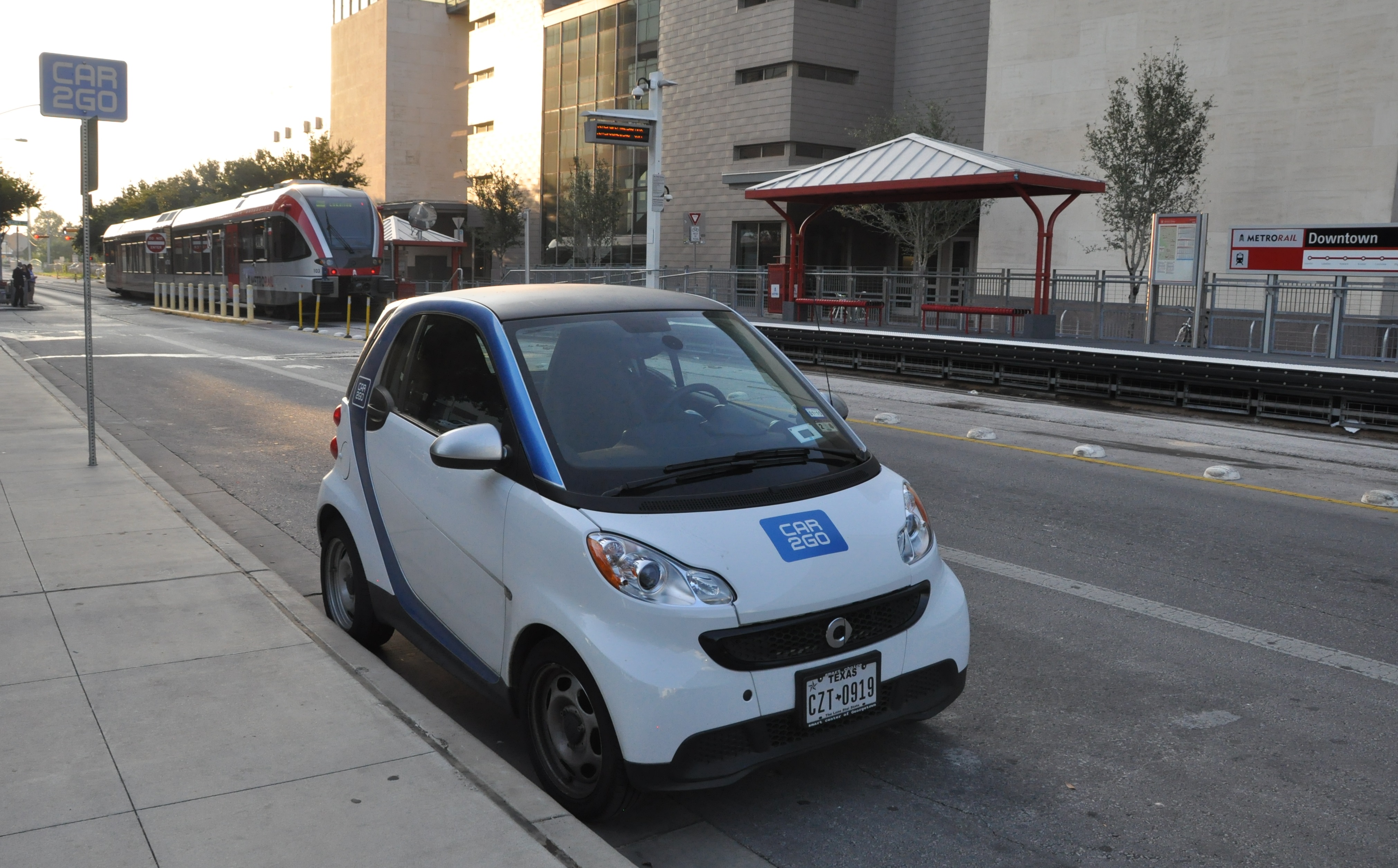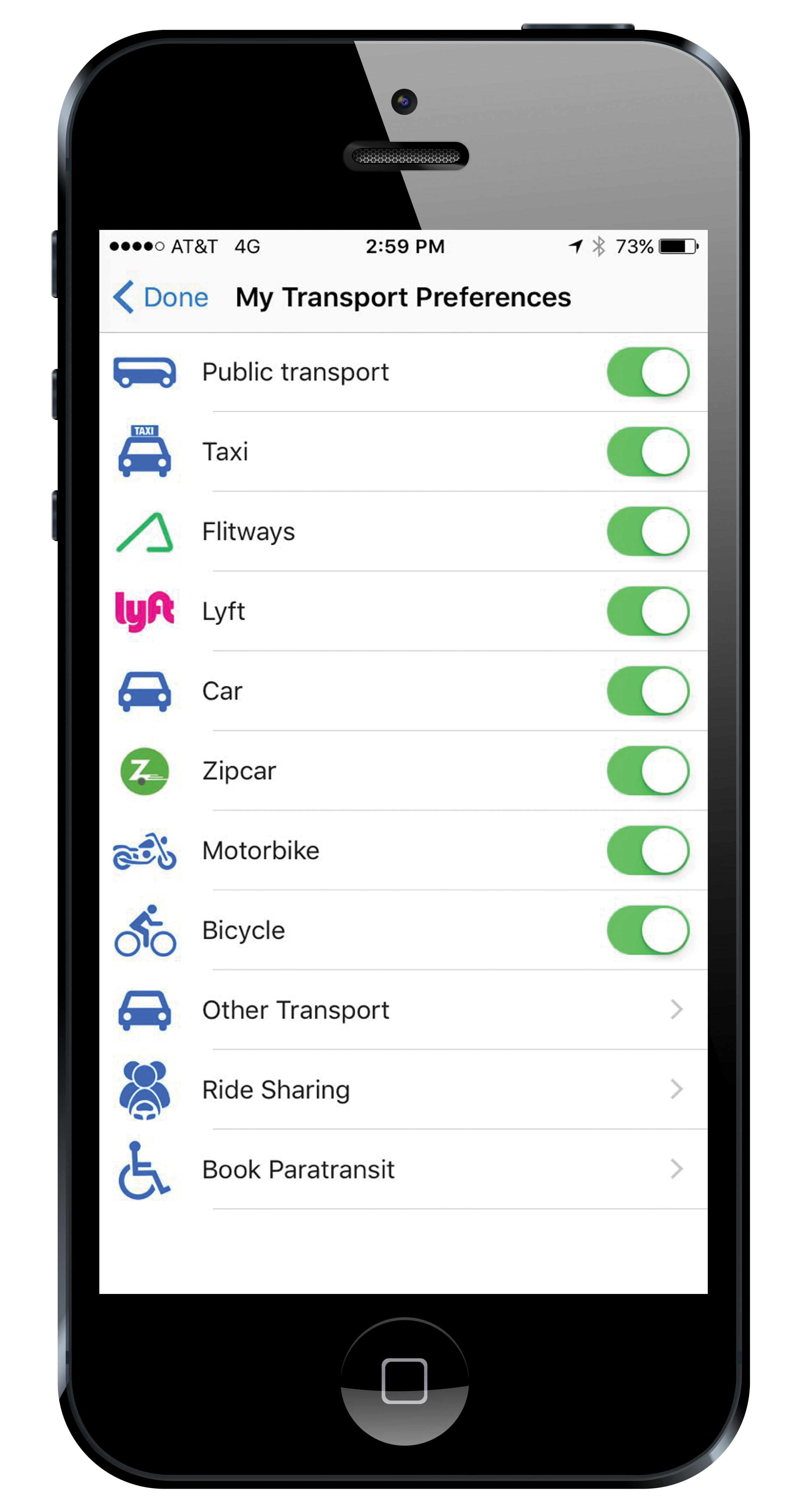
To Uber or Not to Uber, that is the question cities must answer as they consider the pros and cons of inviting private transportation service providers to fill transportation gaps.
Back in 1999, Frank Martz, city manager of Altamonte Springs, Florida, had an idea to expand transportation services to areas not covered by the local bus company.
Why not provide residents door-to-door on-demand rides for trips beginning and ending within the city limits? Users could use a computer, a phone or a kiosk to call rides, and an algorithm could map out the most efficient route for roaming vehicles traversing the city, picking up passengers as needed.
The federal government was intrigued and provided a grant to flesh out the idea. The state agreed and, according to Martz, offered to pay half the operating costs.
Who wasn’t on board? Lynx Transit, the local bus company for Central Florida.
“It was just so outside of their comfort zone they couldn’t conceive of a way to make wide-scale, on-demand transit work,” Martz says.
In 2015, Lynx pulled funding, and the project was on life support until Martz, with the blessing of the local congressman, John Mica (R-FL), approached
“We’re as edgy and innovative as a city of our size can get,” Martz says. “We knew that we needed to figure out how government could utilise a global company to solve local problems.”
Finally, in 2016, Altamonte Springs agreed to a pilot program with Uber that would see the authority subsidise by 20% all Uber rides beginning and ending inside city limits or 25% if they start or end at the nearest Orlando light rail station.
The results are impressive. Martz says the year-long pilot has been a success, letting him keep or expand transportation coverage while lowering overall costs. The original budget for the ridesharing service with Lynx was $1.5 million per year while the cost under Uber has been less than $100,000.
Growing trend
In addition to Altamonte Springs, Uber and its competitor Lyft have partnered with dozens of US cities to bridge transportation gaps in both urban and suburban communities – from paratransit services in Boston to first and last mile rides in St.Petersburg, Florida, and Centennial, Colorado. And the demand continues to climb. Martz says more than 60 municipalities around the world have contacted him for more information on his partnership with Uber.
However, some experts argue that inviting private companies to take over transportation services in a community can have unintended consequences. Large cities like San Francisco and Boston have seen thousands of new vehicles inundate their streets, affecting transit ridership while worsening congestion and pollution. Estimates of Uber and Lyft vehicles in San Francisco alone range from 35,000 to 45,000, and city officials have publically challenged Uber to work more closely with San Francisco Municipal Transportation Agency (SFMTA) to regulate licenses, vet drivers and enforce vehicle safety and training policies.
“Cities should be able to regulate ridesharing services, but the question is how,” says Mike Ramsey, automotive research director and analyst for
Both Uber and Lyft consider themselves technology companies and are regulated by public utility agencies in most states but many argue that local transportation agencies should be responsible for regulation (as happens in other areas – see box). And many public utility agencies agree, including the California Public Utilities Commission whose commissioner suggested that CPUC wasn’t in the best position to regulate rideshare.
It comes down to safety, argues Paul Rose, a spokesperson for SFMTA and one of the transportation officials who have called for a regulatory overhaul of rideshare in California. “[San Francisco’s] number one commitment is to eliminate traffic fatalities in the city, and we’re willing to work with any transportation services company to do that. But if companies like Uber want to be part of a solution to issues like safety and congestion, it needs to first and foremost share its data.”
Sharing data
The data issue comes up repeatedly among transportation officials who have had contact with rideshare companies. Transportation agencies use massive amounts of data to gain insight into traffic flow, and the information Uber and Lyft collect from drivers could help with incident response and long-term planning. Unfortunately, rideshare companies have been reluctant to share that data for driver and rider privacy as well as for competitive reasons.According to Rose, SFMTA has requested access to Uber’s data, so it can better assess how rideshare is affecting traffic patterns and congestion. He argues that if the data shows trip times are not being significantly reduced for all travellers – not only rideshare users – the net impact of companies like Uber could be called into question. For its part, Uber is starting to share more of its data; however, a much publicised agreement to share information with Boston has been rocky.
The company also recently announced Movement, a data-sharing platform currently in beta testing and available to 500 transportation officials and researchers. According to Andrew Salzberg, head of transportation policy and research for Uber, the program will be expanded soon.
“We’re willing to sit with partners to see their data needs and how we can help,” Salzberg says. “Agencies are often tasked with long-term planning, and they need to start with existing conditions. That data can be hard to get.”
Successful partnerships
Uber appears to be listening to transportation officials around the world, giving them a new solution to old problems. “Agencies come to us with basic transportation issues, and Uber allows them to tackle those problems in a different way,” Salzberg says.
Indeed, after a very public disagreement with the city of Boston about data-sharing, Uber recently partnered with Massachusetts Bay Transportation Agency (MBTA) to complement its RIDE paratransit service that provides on-demand transportation for special needs riders across the Boston area. Lyft is also part of the pilot.
The program requires riders to pay the first $2, and MBTA will pick up the remaining cost of the trip up to $13. According to Ben Schutzman, director of transportation innovation for MBTA, the partnership has been going well as customer experience has improved while costs have fallen for both riders and the agency. Schutzman says the cost to MBTA of each ride used to be $31and is now just $9 and a little over $4 for riders. The pilot is limited to 400 riders who have taken more than 10,000 trips in five months.
Shutzman says the program is evaluated weekly and has, so far, been a success. The volume of rides is up and the service area was extended two weeks into the pilot to address rider feedback. MBTA has multiple calls with Uber and Lyft representatives each week, and issues are often fixed within days, if not hours.
Mike Ramsey of Gartner has some tips on how local municipalities and transportation agencies can best work with rideshare companies:
Start a dialogue: You can engage with Uber or Lyft rather than just let them come in and disrupt your transportation system.
Be open: Even if you don’t think rideshare is a good fit for your community, someone may surprise you with some new innovation or service. It doesn’t hurt to listen.
Start with a trial: Make sure you do a pilot program with a firm end date, so you can evaluate the results and overall impact.
Get public support: Communicate with people in the community and constantly get their feedback on their rideshare experiences. Ultimately, they are the end user.
“We’ve had good feedback from users - which is good, because The Ride as it stood before the Uber and Lyft partnerships, wasn’t meeting our transit needs,” Schutzman says.
Uber also points to trends in traditionally car-centric cities and suburban areas like Los Angeles to show the impact rideshare can have on driving behaviours. In just two years, coverage (defined by a 10-minute or less wait time) has extended way beyond the urban core and into Orange, Ventura, Riverside and San Bernardino counties.
Moving forward
Examples like the MBTA partnership and Los Angeles have excited Uber executives about the possibilities of additional deals with cities and transportation agencies around the world. Uber’s Salzberg, who comes from a public transit background, says the company doesn’t want to replace existing transit systems, rather to complement them - whether through first/last mile, safe ride programs, off-peak hours or specific programs like paratransit in Boston.
“We’re not necessarily ideal for high volume transportation situations, but we fit real nicely with on-demand transit services - however that fits with what a local agency wants to do,” he says.
And this returns the spotlight to the transportation agencies themselves and how aim to solve 21st Century transportation issues. The country is changing, becoming more savvy, more urban and less dependent on private vehicle ownership and policies need to reflect these changes.
“Government needs to stop thinking about what was important to the last generation and more about what the current generation wants and needs,” says Martz, the city manager from Altamonte Springs. “No one cares about lane widths or expanded highways any more. They want digital services that help them get from point A to point B quicker, easier and safely. That’s it.”
Ridesharing and industry leaders Uber and Lyft could be a critical solution to those issues - but a few kinks need to be worked out first.
In America, the services offered by the likes of Uber and Lyft are considered as ‘ridesharing’ whereas in Europe that term refers to what Americans often call ‘carpooling’ – that is private individuals travelling in the same direction sharing a vehicle.
In many European and other countries, the services offered by the likes of Uber are considered as a ‘taxi-hailing’ app and often regulated as such. Many require Uber drivers to register their earnings for tax purposes and some insist its drivers meet the same requirements as taxi drivers while others have banned its operations as ‘illegal’ taxi services.
Mike Ramsey of Gartner has some tips on how local municipalities and transportation agencies can best work with rideshare companies:
Start a dialogue: You can engage with Uber or Lyft rather than just let them come in and disrupt your transportation system.
Be open: Even if you don’t think rideshare is a good fit for your community, someone may surprise you with some new innovation or service. It doesn’t hurt to listen.
Start with a trial: Make sure you do a pilot program with a firm end date, so you can evaluate the results and overall impact.
Get public support: Communicate with people in the community and constantly get their feedback on their rideshare experiences. Ultimately, they are the end user.












